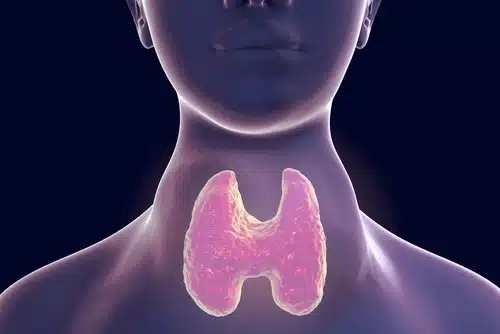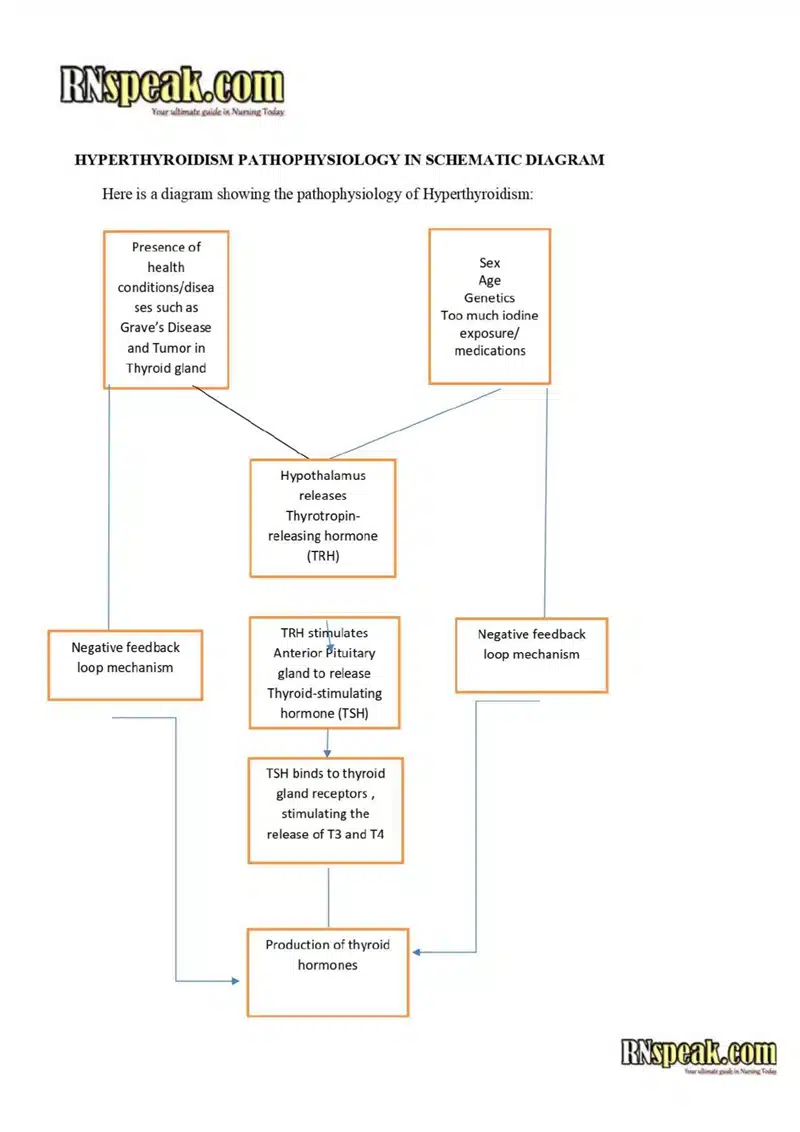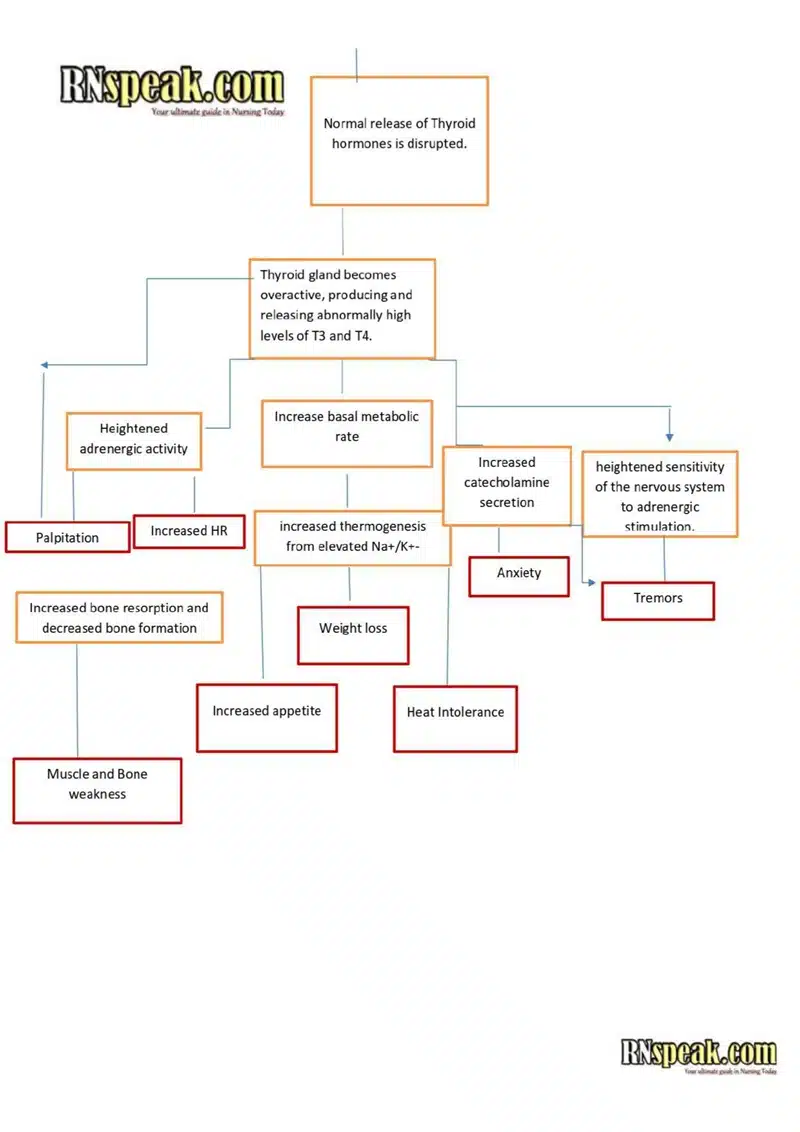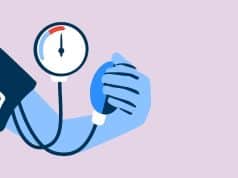
Imagine your body is a car with the thyroid gland as its engine, controlling how fast your body runs like a car’s accelerator. Now, picture a car with a stuck accelerator that stays pressed down no matter how much you try to slow it. The engine races, and the car speeds uncontrollably. This is similar to hyperthyroidism.
In hyperthyroidism, the thyroid gland is overactive, producing excessive thyroxine. This hormone signals your body to speed up, causing everything to function faster than usual. Symptoms include a rapid heartbeat, sweating, jitteriness, and weight loss despite normal eating habits. It’s as if your body is in overdrive and needs to slow down.
Nurses are often the first point of contact for patients. Understanding hyperthyroidism helps in early identification of symptoms and timely interventions. Knowing the disease process allows nurses to predict potential complications and take preventive measures.
According to a study by De Leo et al. (2016), the prevalence of hyperthyroidism is 0.8% in Europe and 1.3% in the USA. The condition is more common in women and its incidence increases with age.
Would you like to learn more about the symptoms, disease process, and management of hyperthyroidism? The following sections will provide detailed information.
Anatomy and Physiology of the Thyroid Gland
The thyroid gland is a butterfly-shaped endocrine gland located in the neck, just below the Adam’s apple. It plays a crucial role in regulating various bodily functions, including metabolism, growth, and development.
Anatomy of the Thyroid Gland:
- Shape and Location: The thyroid gland resembles a butterfly and is situated in the anterior neck, in front of the trachea and larynx.
- Composition: It consists of two lobes (left and right) connected by an isthmus, a thin band of connective tissue.
- Size: The thyroid gland typically weighs between 15 to 25 grams and is the largest of the endocrine glands.
- Blood Supply: The gland is supplied by the superior and inferior thyroid arteries.
- Nerve Supply: It receives both sympathetic and parasympathetic nerve supply from various cervical ganglia and nerves.
- Lymphatic Drainage: The lymphatic drainage passes through various lymph nodes in the neck.
Physiology of the Thyroid Gland:
- Hormone Production: The thyroid gland produces two main hormones: triiodothyronine (T3) and thyroxine (T4). These hormones regulate the body’s metabolism, growth, and development. Iodine is essential for the production of T3 and T4. Inadequate iodine intake can lead to goiter and other thyroid disorders.
- Regulation: The production of thyroid hormones is controlled by thyroid-stimulating hormone (TSH) from the pituitary gland, which is regulated by thyrotropin-releasing hormone (TRH) from the hypothalamus.
- Functions:
- Metabolism: Increases the basal metabolic rate, affecting energy expenditure.
- Growth and Development: Promotes physical and mental growth in children.
- Calcium Regulation: Produces calcitonin, which helps regulate calcium levels in the blood.
Causes of Hyperthyroidism
Hyperthyroidism is a condition in which the thyroid gland produces excessive amounts of hormones, leading to a wide range of symptoms and potential complications. The main causes include:
- Graves’ Disease: An autoimmune disorder and the most common cause, where the immune system attacks the thyroid gland, causing overproduction of hormones.
- Thyroid Nodules: Lumps or growths in the thyroid gland can become overactive and secrete excessive hormones.
- Thyroiditis: Inflammation of the thyroid gland, causing stored hormones to leak into the bloodstream.
- Excessive Iodine Intake: Consuming large amounts of iodine from supplements or certain medications can trigger overproduction of thyroid hormones.
Risk Factors for Hyperthyroidism
- Sex: Women are more likely to develop hyperthyroidism than men, possibly due to hormonal differences.
- Pregnancy: This can trigger hyperthyroidism, posing complications for both mother and baby.
- Age: Higher risk in older adults, especially those over 60.
- Genetics: A family history of thyroid disease increases risk.
- Iodine Exposure: Excessive iodine from medications or foods can cause the thyroid to overproduce hormones.
- Other Health Conditions: Conditions like type 1 diabetes, primary adrenal insufficiency, and pernicious anemia increase risk.
- Smoking: Linked to a higher likelihood of developing Graves’ disease.
Complications of Hyperthyroidism
If untreated, hyperthyroidism can lead to serious complications:
- Heart Problems: Excess thyroid hormones can cause rapid and irregular heartbeat, leading to heart failure or stroke.
- Osteoporosis: Accelerated loss of bone density, increasing the risk of fractures.
- Thyroid Eye Disease: Graves’ disease can cause inflammation and swelling around the eyes, leading to bulging eyes, pain, double vision, and vision loss.
- Thyroid Storm: A rare, life-threatening surge of thyroid hormones, causing high fever, agitation, confusion, and potential coma.
Diagnostic Procedures for Hyperthyroidism
- Blood Tests: Measure levels of T3, T4, and TSH to confirm diagnosis.
- Radioactive Iodine Uptake Test: Measures how much radioactive iodine the thyroid absorbs from the bloodstream to identify the cause.
- Thyroid Scan: Uses radioactive iodine to create an image of the thyroid gland, identifying overactivity in specific areas.
Treatment of Hyperthyroidism
Treatment depends on the underlying cause, age, and overall health, and includes:
- Antithyroid Medications: Drugs like methimazole and propylthiouracil reduce hormone production. Beta-blockers alleviate symptoms such as rapid heartbeat and anxiety.
- Radioactive Iodine Therapy: A safe dose of radioactive iodine shrinks the thyroid gland over time.
- Surgery: Partial or complete removal of the thyroid gland (thyroidectomy) may be recommended if other treatments are unsuitable or ineffective.
Nursing Interventions for Hyperthyroidism
Key interventions for caring for a patient with hyperthyroidism include:
- Monitor Vital Signs:
- Check heart rate, blood pressure, and temperature regularly.
- Look for signs of rapid heartbeat (tachycardia), fever, or low blood pressure.
- Monitor for signs of thyroid storm, and a sudden worsening of symptoms.
- Manage Symptoms:
- Administer medications as prescribed to control symptoms like rapid heartbeat, anxiety, and diarrhea.
- Help the patient stay cool and comfortable in a quiet environment.
- Encourage rest and avoidance of stressful situations.
- Monitor Nutrition and Weight:
- Weigh the patient daily and monitor for unintentional weight loss.
- Provide high-calorie, easily digestible foods to meet increased energy needs.
- Avoid foods that cause diarrhea or increase bowel movements.
- Provide Emotional Support:
- Recognize that hyperthyroidism can cause anxiety, irritability, and mood swings.
- Listen to the patient’s concerns and provide a calm, reassuring presence.
- Involve family members in providing emotional support.
- Educate the Patient:
- Teach about the condition and the importance of taking medications as prescribed.
- Explain how to recognize and report signs of complications like thyroid storm.
- Provide information on managing symptoms and maintaining a healthy lifestyle.
Conclusion
Nurses play a critical role in the care of patients with hyperthyroidism. By closely monitoring the patient, managing symptoms, providing emotional support, and educating the patient, nurses can help patients cope with the condition effectively. Regular checkups with healthcare providers are essential to ensure proper treatment and prevent complications. Understanding the disease process and management strategies allows nurses to collaborate effectively with healthcare providers, leading to improved patient outcomes, increased patient satisfaction, and a deeper understanding of the complex interaction between the thyroid gland and overall health.
Hyperthyroidism Pathophysiology and Schematic Diagram
References:
- De Leo, S., Lee, S. Y., & Braverman, L. E. (2016). Hyperthyroidism. Lancet (London, England), 388(10047), 906–918. https://doi.org/10.1016/S0140-6736(16)00278-6
- Hyperthyroidism, thyroid storm, and Graves disease. (2024, July 18). Retrieved July 22, 2024, from Medscape.com website: https://emedicine.medscape.com/article/767130-overview?form=fpf
- Hinkle, J. L., & Cheever, K. H. (2014). Brunner & Suddarth’s textbook of medical-surgical nursing (Edition 13.). Wolters Kluwer Health/Lippincott Williams & Wilkins.









